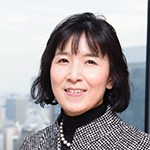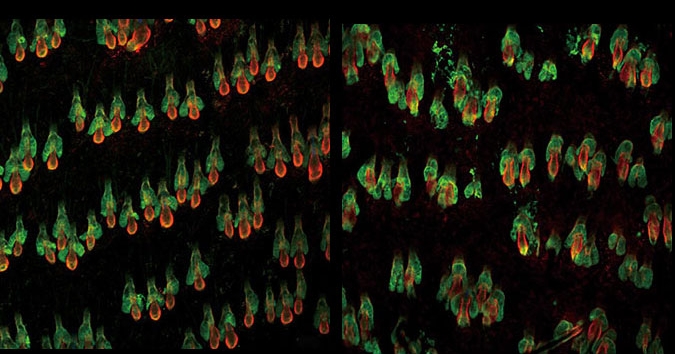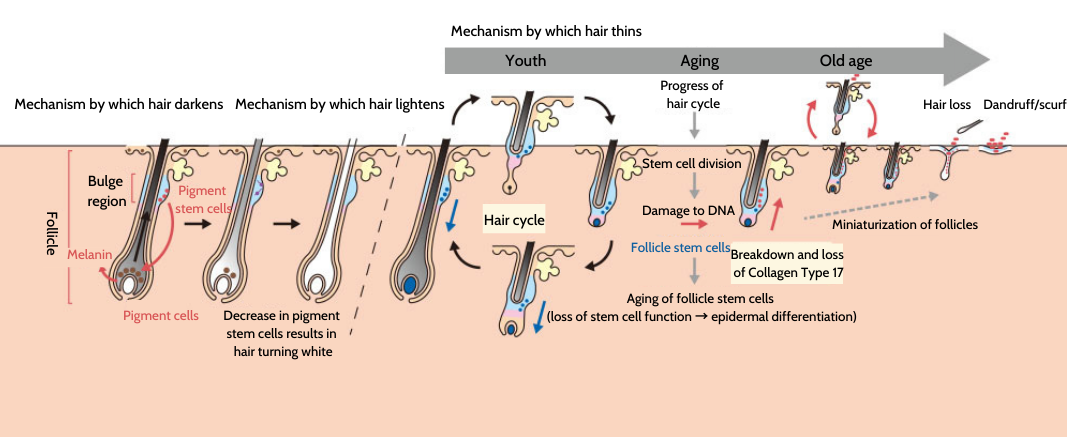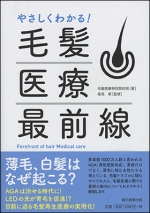Why does our hair turn gray and thin out as we age?

An introduction to academia starting with “Why?”
After making a list of questions which would pique anyone’s interest, we asked faculty members on campus who might be knowledgeable in these areas to answer them from the perspective of their respective expertise. Let’s take a look into the world of research through questions that you feel you know something about, but cannot answer definitively when actually asked.
Q18. Why does our hair turn gray and thin out as we age?
Even people who had thick, dark hair when they were young experience increased hair loss and graying as they age. Why does this happen? Should we all try eating more seaweed? Answered by Emi Nishimura
Answered by Emi NishimuraProfessor, The Institute of Medical Science
| Biology of Aging and Regeneration |
Melanocyte stem cells reside in hair follicles

In comparison with mice fed a regular diet (left), mice fed a high-fat diet for six months (right) have fewer hair follicles, the parts shown in red.
Hair follicles are responsible for hair growth, and they contain cells called melanocyte stem cells, which produce the melanocytes (pigment cells that generate melanin pigment) that give hair its color at the root. When those stem cells are reduced due to aging or other factors, less melanocytes are generated, leading to less melanin production, thereby causing gray hair. In the past, it was not known which cells create pigment cells, but in 1999, we discovered melanocyte stem cells and reported on this in 2002.
Vitiligo vulgaris is a disease that causes white unpigmented skin areas on the skin, and Michael Jackson was known to have suffered from this disease. Exposure to ultraviolet light can cause pigment spots that grow around the hair pores, which leads to complete recovery of skin pigmentation. I have been inspired by this phenomenon which made me believe that stem cells exist in hair follicles. It turned out that this phenomenon is also actually originated from melanocyte stem cells in the follicles.
Melanocyte stem cells reside within a region called the hair follicle bulge, where hair follicle stem cells are located. During the growth phase, the progeny of melanocyte stem cells move towards the root together with the expanding progeny of hair follicle stem cells, causing the pigmented hair growth. Once melanocyte stem cells are all lost by aging and stress, the melanocytes are not supplied from the stem cell pools, leading to the growth of white hair. If the pigment cells remain in the root and are simply less active, it’s possible for the same hair to switch back from white to black.
Miniaturization of follicles leads to hair loss
As we age, our follicles gradually become smaller, leading to hair loss. This happens because the substance Collagen Type 17 (Col17a1/BP180), which anchors stem cells onto the basement membrane, is lost. The loss of Collagen Type 17 is believed to result from cells reacting to the stress that occurs when DNA inside stem cells is damaged through aging and other factors. This loss of the source of supply of cells to form new hair means that we no longer grow robust hair, and melanocyte stem cells also cannot be maintained, leading to gray hair.
To maintain Collagen Type 17, we should avoid excessive stress. A high-fat diet speeds up depletion of hair follicle stem cells and causes them to lose hair more readily, so it’s best to avoid deep-fried and fatty foods. Researchers are working to develop new therapeutic strategies for maintaining Collagen 17 and treating hair loss.


Yasashiku Wakaru! Mohatsu Iryo Saizensen (“Easy-to-Follow Guide to the Latest Advances in the Medical Science of Hair”) (Asahi Shimbun Publications, 2018)
This book introduces a variety of research on head hair. Professor Nishimura’s contribution explains the mechanisms of whitening and hair loss with age.
* This article was originally printed in Tansei 45 (Japanese language only). All information in this article is as of September 2022.






